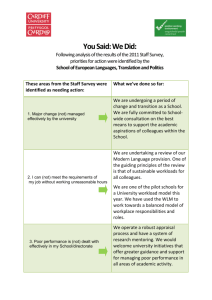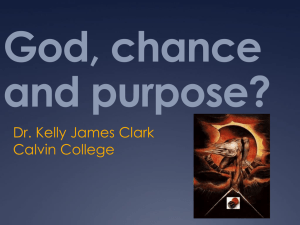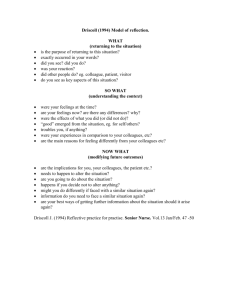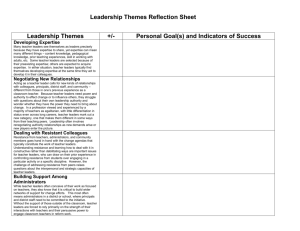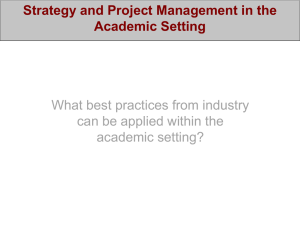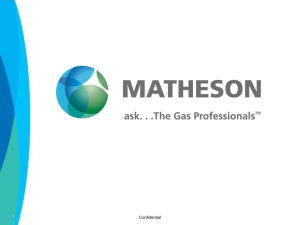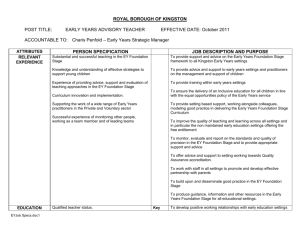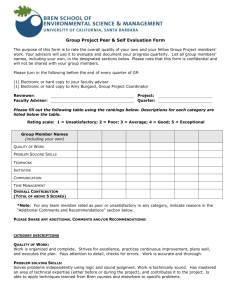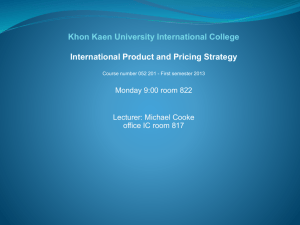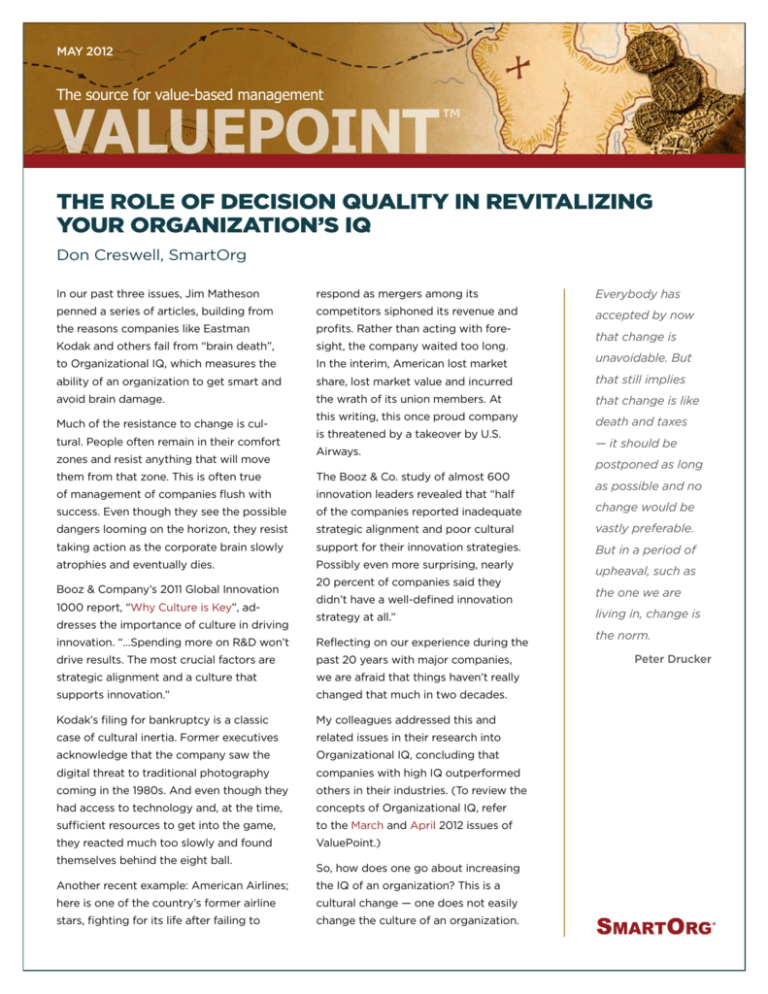
May 2012 The source for value-based management VALUEPOINT ™ THE ROLE OF DECISION QUALITY IN REVITALIZING YOUR ORGANIZATION’S IQ Don Creswell, SmartOrg In our past three issues, Jim Matheson respond as mergers among its Everybody has penned a series of articles, building from competitors siphoned its revenue and the reasons companies like Eastman profits. Rather than acting with fore- accepted by now Kodak and others fail from “brain death”, sight, the company waited too long. to Organizational IQ, which measures the In the interim, American lost market unavoidable. But ability of an organization to get smart and share, lost market value and incurred that still implies avoid brain damage. the wrath of its union members. At that change is like this writing, this once proud company death and taxes Much of the resistance to change is cultural. People often remain in their comfort zones and resist anything that will move is threatened by a takeover by U.S. Airways. that change is — it should be postponed as long them from that zone. This is often true The Booz & Co. study of almost 600 of management of companies flush with innovation leaders revealed that “half success. Even though they see the possible of the companies reported inadequate change would be dangers looming on the horizon, they resist strategic alignment and poor cultural vastly preferable. taking action as the corporate brain slowly support for their innovation strategies. But in a period of atrophies and eventually dies. Possibly even more surprising, nearly Booz & Company’s 2011 Global Innovation 1000 report, “Why Culture is Key”, addresses the importance of culture in driving 20 percent of companies said they didn’t have a well-defined innovation strategy at all.” innovation. “…Spending more on R&D won’t Reflecting on our experience during the drive results. The most crucial factors are past 20 years with major companies, strategic alignment and a culture that we are afraid that things haven’t really supports innovation.” changed that much in two decades. Kodak’s filing for bankruptcy is a classic My colleagues addressed this and case of cultural inertia. Former executives related issues in their research into acknowledge that the company saw the Organizational IQ, concluding that digital threat to traditional photography companies with high IQ outperformed coming in the 1980s. And even though they others in their industries. (To review the had access to technology and, at the time, concepts of Organizational IQ, refer sufficient resources to get into the game, to the March and April 2012 issues of they reacted much too slowly and found ValuePoint.) themselves behind the eight ball. So, how does one go about increasing Another recent example: American Airlines; the IQ of an organization? This is a here is one of the country’s former airline cultural change — ­­­ one does not easily stars, fighting for its life after failing to change the culture of an organization. as possible and no upheaval, such as the one we are living in, change is the norm. Peter Drucker ValuePoint: May 2012 Does this mean you give up in the face of inertia? We don’t If you would like to delve more deeply into decision quality, think so. I invite you to read chapters two and three of “The Smart One answer comes from Vince Barabba, author of many books and publications on management, market research and decision making. A former executive of Xerox, Kodak and General Motors, as well as having served as head of the U.S. Census, he has lived in the trenches and knows what it’s like to effect change in large organizations. In an interview with Jim Matheson several years ago, Vince made a profound observation, “Change the decision process and the culture will follow.” Organization: Creating Value through Strategic R&D” (Matheson and Matheson, Harvard Business School Press). See where you rate, where your colleagues rate and finally how you and your colleagues view the company as a whole when it comes to making the important decisions that impact the future of your company. This can be a good start to improving your decision processes, taking initial steps towards improving the decision-making culture of your organization. And, most important, keeping your organization’s brain alive and well. Take a moment to think about your organization’s decision processes and, in turn, the quality of decision making. The Decision Quality spider diagram provides a good start. Look at the six dimensions of decision quality on the spider diagram below, discuss each dimension with your colleagues and estimate your application of each on a scale of 0% to 100%. Try this out on a single decision and then compare several decisions. Upcoming Events Pipeline 2012 — The Online Conference for Innovative Product Development 75% of new products fail to meet projected revenue and profits. Don Creswell will show how the tools of Advanced PPM can significantly improve your success rate. Tune in to his presentation “Winning in an Uncertain World,” which will run throughout this virtual conference. 4 AM – 1 PM PDT | 10 May 2012 | More Information Front End of Innovation Conference David Matheson will join over 100 world-class speakers as they explore the hottest topics in today’s dynamic innovation environment. 15-17 May 2012 | Orlando, FL | More Information Taking PPM to the Next Level: Second in a Series SAP, SmartOrg and Platinum DB Consulting combine forces to show how Advanced PPM can help your company make better choices and develop portfolios that focus on optimizing the value of product development. 11 AM PDT | 23 May 2012 | More Information Spider diagram before and after analysis 855 Oak Grove Avenue, Suite 202 Menlo Park, CA 94025 T: +1.650.470.0120 | F: +1.650.328.1612 info@smartorg.com | www.smartorg.com Since 2000, SmartOrg software and services have helped companies discover their most profitable opportunities. We provide solutions for the economic evaluation of opportunities, especially when the future is clouded with uncertainty. Companies like Boeing, Chevron, Dow AgroSciences, HP, SanDisk and TEVA Pharmaceuticals use SmartOrg to build capability; drive innovation from ideas to commercialization; and select projects and improve returns on their portfolios. © 2000-2012 SmartOrg, Inc. All rights reserved. SmartOrg, Portfolio Navigator and Organizational IQ are registered trademarks of SmartOrg in the USA and other countries. Other company and product names mentioned in this publication may be trademarks or registered trademarks of their respective companies. 2012-05-01
